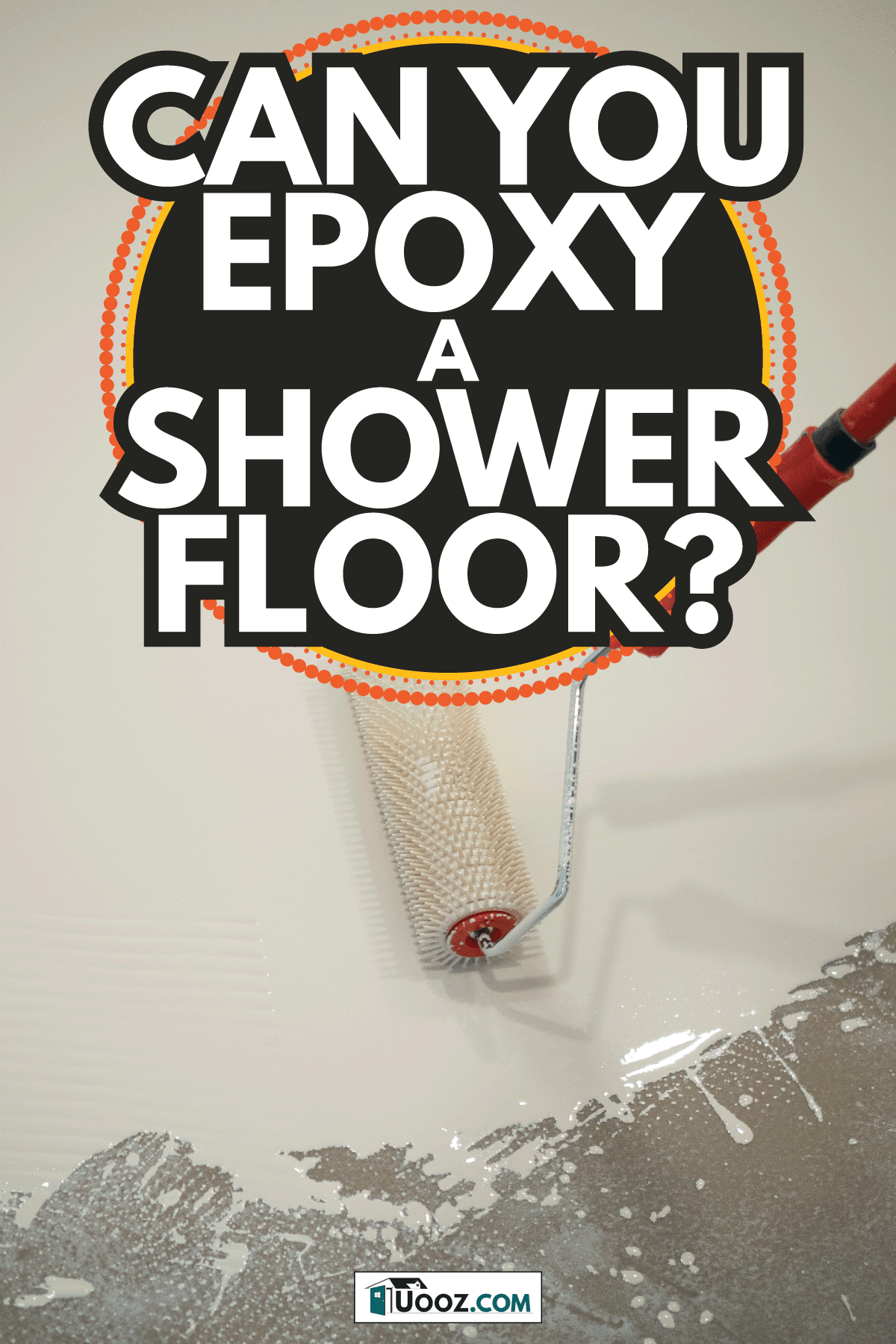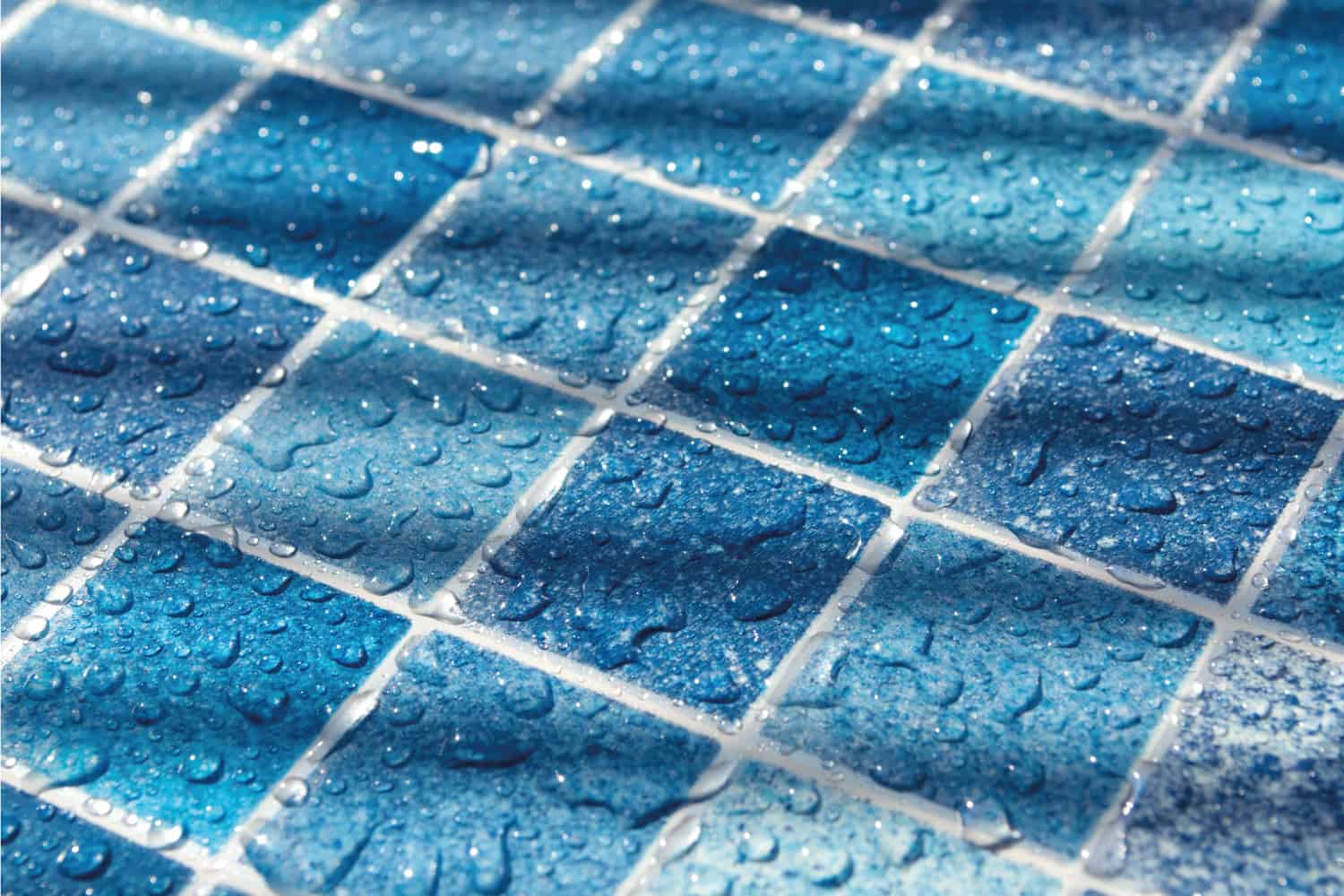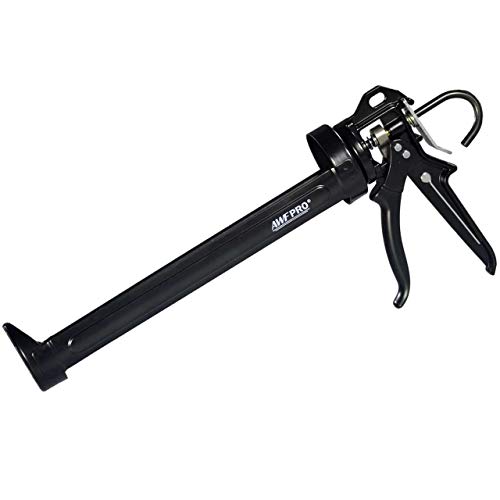You've likely read or heard about how durable an epoxy bond or protective layer can be for various surfaces and materials. Epoxy is a two-part adhesive or protectant that is durable, rigid, and tough. Knowing what you know about epoxy, it's hard not to wonder if it's something you could use on a shower floor to protect it against the copious amounts of water and wear it endures. So can you epoxy a shower floor? We've done some searching and have some answers for you.
Epoxy is an excellent option for shower floors. Not only is it durable, but it is also highly customizable. Along with its durability, an epoxy finish is hygienic, healthy, and easy to clean. Epoxy can be used for finishes and grout work.
Now that you know that epoxy can most definitely be used on your shower floor for various reasons let's discuss it in more detail. We'll go over the uses for epoxy on your shower floor, as well as answer any other questions you're likely to have. Keep reading!

How Can You Use Epoxy on a Shower Floor?
Epoxy works great as a sealant and an adhesive. It can be used for a variety of surfaces, from aircraft to tabletops. Let's examine its uses on your shower floor.

As a Sealant
Once fully cured, a properly applied epoxy creates a strong seal from the elements at work in your shower -- namely, water. Epoxy is waterproof, and using a layer over your shower tile can effectively seal in that beautiful floor and keep it looking great for many years to come.
It's always important to know how long and in what type of environment your epoxy will fully cure. Though the floor might be dry enough to walk on after 12 hours, it's best to wait a whole week (7 days) before letting it get wet.
For Decoration
Epoxy resin is an excellent material to which you can add your own flair. Since it dries clear, many people use it for various art projects, such as mosaics or homemade jewelry. With this in mind, your shower floor can be anything you want it to be. You can make your shower floor a mosaic of whatever material you see fit.
Here's an excellent video of a DIY epoxy shower floor with a glitter finish!
As Grout to Adhere Tiles Together
Using epoxy as grout can create a strong bond between shower tiles that also doesn't expand and contract as much as traditional grout. It's amazingly durable and comes in a variety of colors, so you're sure to find something that works for you. The epoxy grout can also be used to refresh your graying or worn-out grout. If you can get a dual caulking gun, it's even better because you won't have to worry about mixing the two parts.
View this epoxy grout on Amazon.
View this dual caulk gun on Amazon.
To read more about caulk in your bathroom, check out our article, "Should You Caulk The Toilet to the Floor?"
Is epoxy good for bathrooms?
Epoxy is a great material to use in bathrooms. It is heat and moisture resistant, which makes it excellent for the environment a hot shower creates. Epoxy doesn't expand and contract as much as other materials. Some grouts or sealants could expand and make your shower tiles crack, but using an epoxy resin will make that much less likely.
Epoxy also has antibacterial properties! So mold and mildew are less likely to set up shop, and the surface will be easy to clean.
Can you epoxy over shower tile?
Essentially, yes, you can use epoxy over shower tile. A thin coat could provide extra protection. However, with tiles held together by grout in an environment with sometimes rapidly changing temperature, the tiles underneath could wreak havoc on the epoxy coating since it doesn't give much. If the desire is there to use epoxy with tile, best save it for the caulk instead of completely covering the tile.
Alternatively, you can apply the epoxy directly to grout lines in already tiled showers, adding a refresh of color and extra protection to your shower stall. It's not recommended to use epoxy directly on your tiles.
How do you apply epoxy to bathroom tiles?
Remember, it's best not to use epoxy directly on bathroom tiles. However, you can use it on the grout lines. Let's go over the steps on applying the grout without a caulking gun.
1. Prep
To prepare, ensure the room in which you're going to be working is warm. Epoxy won't dry and cure in the cold. Have your tools handy, as you'll need to work quickly and efficiently. You'll need your epoxy grout, vinegar, water, trowel, sponge, and some sticks for scraping. Make sure your shower is clean and dry.
2. Mix the Grout
Epoxy is a two-part mix. Always follow the manufacturer's instructions when mixing and preparing your grout. Once mixed, the epoxy should be soft and spreadable.
3. Spreading the grout
Have your sponge dampened and close by. Be sure you have a water source close at hand in case the sponge needs to be remoistened. Begin spreading the grout over a small area of the tiles. Use the scraping sticks to smooth the grout lines.
Use the damp sponge as quickly as possible to wipe the excess grout off the tile portion, trying to leave it solely in the grout lines. This part can be done more efficiently if you have a friend who can assist. No matter how efficient you are, some grout will likely be left on the tile.
This is where the vinegar comes in. A mixture of vinegar and water can be used to scrub away the haze. This might have to be done several times, so don't fret if it doesn't work the first time.
4. Repeat
Keeping to small sections, continue to cover the tiles and grout lines with the epoxy finish until the entire area is completed. Inspect your work. Any unsightly errors or chunks of grout you've missed can be soaked with a bit of water and scraped away in most instances.
5. Cure Before Use
Always consult the instructions on the epoxy resin you are using, but keep in mind, most epoxy resins take about seven days to cure and become waterproof fully. Don't jump the gun and ruin your hard work!
Do you have a leaky shower? Check out our post and see if you can resolve it yourself!
What are the disadvantages of epoxy flooring?
Some epoxy mixes have toxic fumes when mixing and applying. People who are sensitive to scents might have difficulty with this. It's also challenging to do without your shower while the curing process completes, which could be up to 7 days, as we've mentioned before. In addition to these difficulties, removing an epoxy floor can be complex and sometimes virtually difficult.
Is epoxy slippery when wet?
Yes, epoxy flooring is going to be slippery when wet as it has a glossy finish. If you do opt to use epoxy on the shower floor, either use it as grout or be sure to install slip-resistant shower mats or stickers to keep the danger at bay.

In Closing
Epoxy can most definitely be used on a shower floor. It can add a touch of personal flair and durability. As with any home improvement, consider your personal preference and the needs of your housemates before making any huge changes, as that epoxy can be difficult to remove and quite slippery. Happy home improvement.






